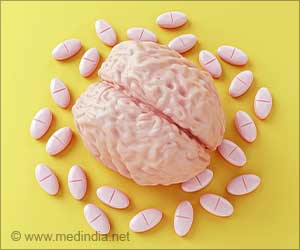Previous research has shown that traumatic spinal cord injury (SCI) is a devastating condition with few treatment options.

Through a series of sophisticated experiments, researchers reporting in The American Journal of Pathology suggest that matrix metalloproteinase-3 (MMP-3) plays a pivotal role in disruption of the brain/spinal cord barrier (BSCB), cell death, and functional deficits after SCI. This link also presents new therapeutic possibilities.
"Matrix metalloproteinases (MMPs) are enzymes known to degrade the extracellular matrix and other extracellular proteins and are essential for remodeling of the extracellular matrix and wound healing. Excessive proteolytic activity of MMPs can be detrimental, leading to numerous pathological conditions, including blood brain barrier (BBB)/BSCB disruption after injury," explains Tae Young Yune, PhD, of the Department of Biochemistry and Molecular Biology, School of Medicine, Kyung Hee University, Seoul, Korea. Although other MMPs have been linked to SCI (i.e. MMP-2, MMP-9, and MMP-12), there has been no previous direct evidence of a similar role for MMP-3.
By comparing mice that underwent spinal cord injury to a control group, investigators found that both MMP3 messenger RNA (mRNA) and MMP-3 protein levels in spinal cord segments were increased after SCI, peaking one day after surgery in the experimental group, whereas no changes were seen in the controls. MMP-3 immunoreactivity was detected in cells within the lesion site, invading neutrophils, and blood vessel endothelial cells in the area outside of the initial injured area (the penumbra).
Another series of experiments focused on the role of MMP-3 in BSCB permeability, using dye to visualize leakage through the BSCB. Similar to MMP-3 mRNA and protein levels, dye leakage reached a maximum one day after SCI. Leakage was lower in Mmp3 knockout mice that were genetically altered to be deficient in MMP-3 as well as in mice injected with either Mmp3 small interfering RNA (siRNA) or a general MMP inhibitor. Injection of MMP-3 into normal spinal cord also significantly increased dye leakage.
MMP-3 was found to contribute to the degradation of tight junction proteins that are responsible for maintaining the integrity of the BSCB barrier. In addition, the researchers reported that MMP-3 induced blood cell infiltration and hemorrhage after SCI in wild-type mice, but not in Mmp3 knockout mice. MMP-3 also mediated activation of other MMPs (MMP-2 and MMP-9) that are up-regulated after SCI. "This is the first study to demonstrate that MMP-3 is involved in MMP-9 activation in central nervous system injury," says Dr. Yune.
Advertisement
"The evidence suggests that BBB/BSCB disruption plays a pivotal role in acute and chronic neurological disorders. The inhibition of MMP-3 may be a promising therapeutic target for human central nervous system disease, including SCI," notes Dr. Yune.
Advertisement
Source-Eurekalert











